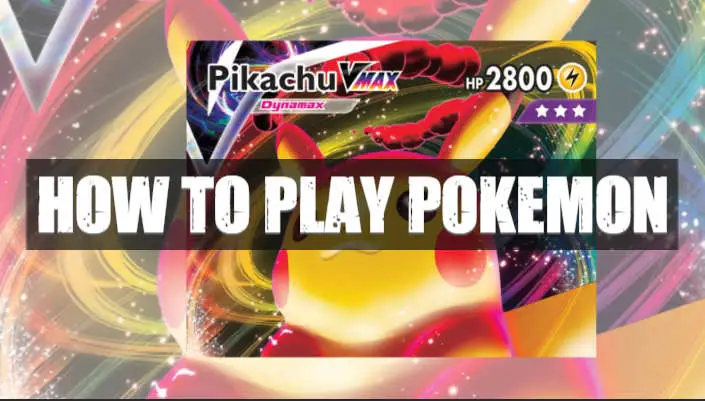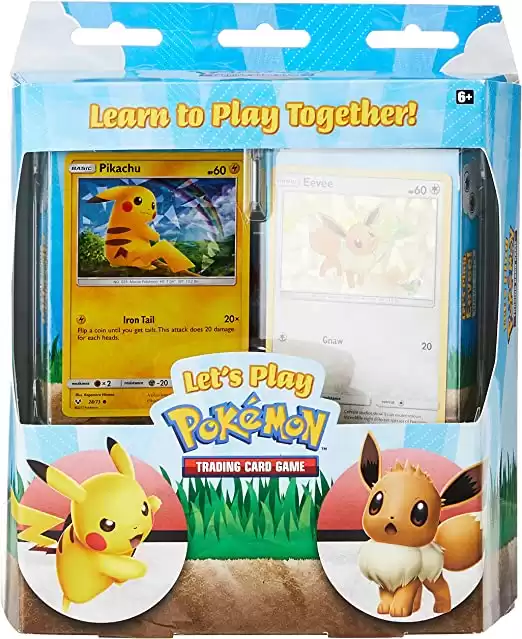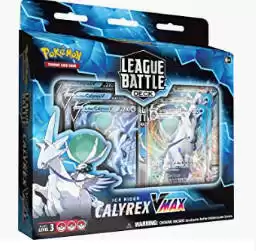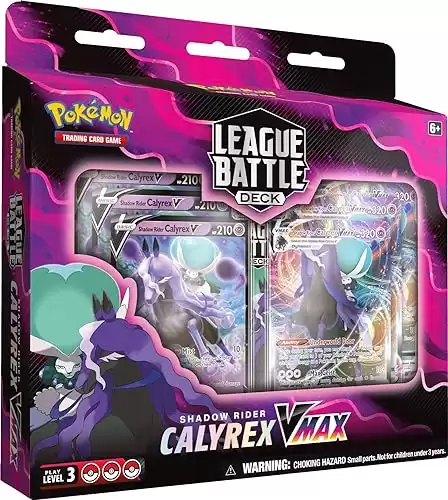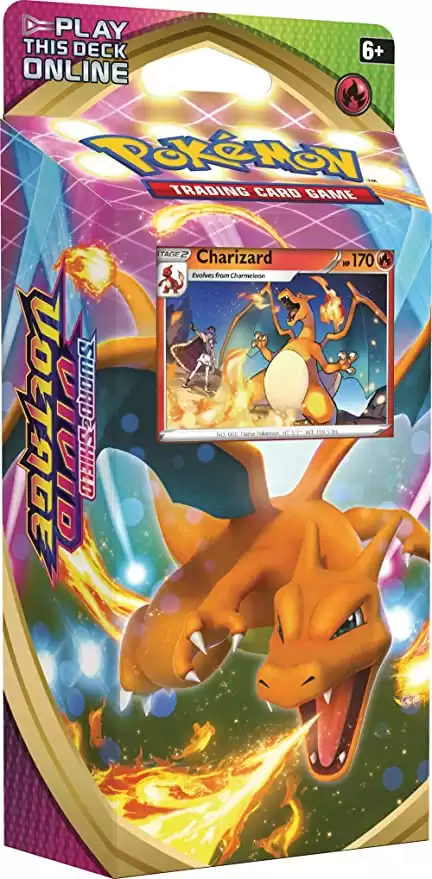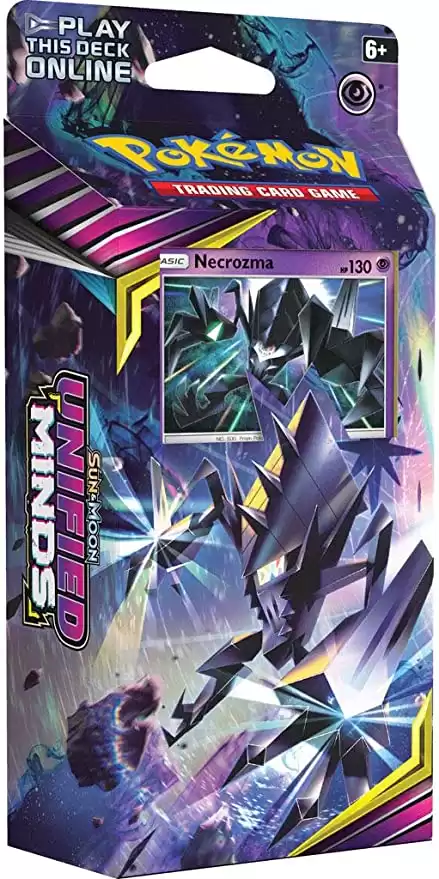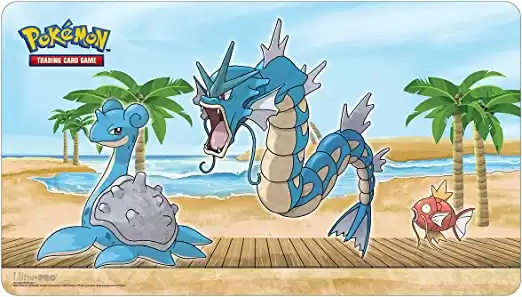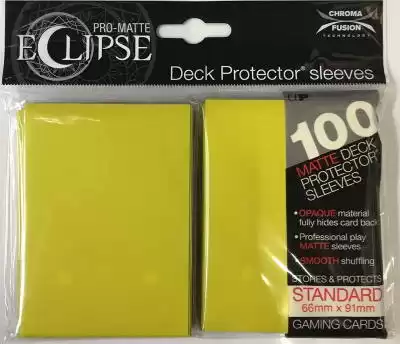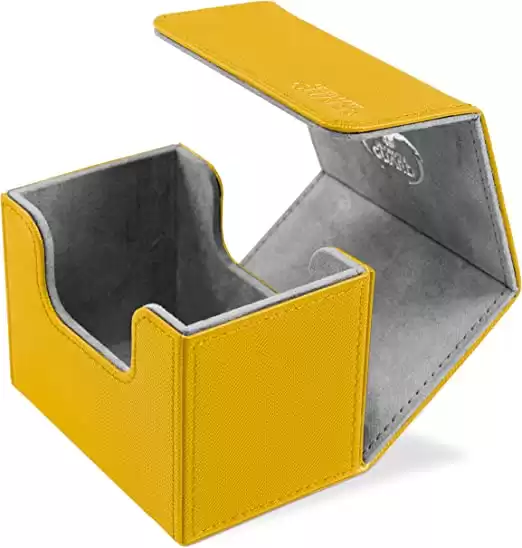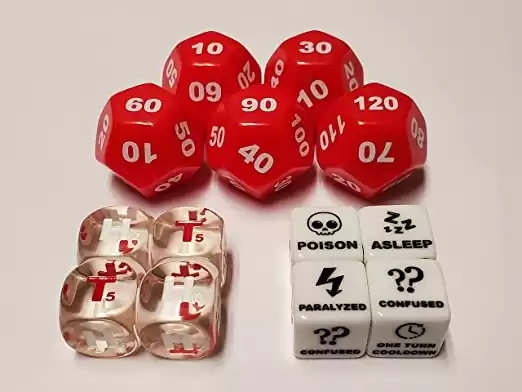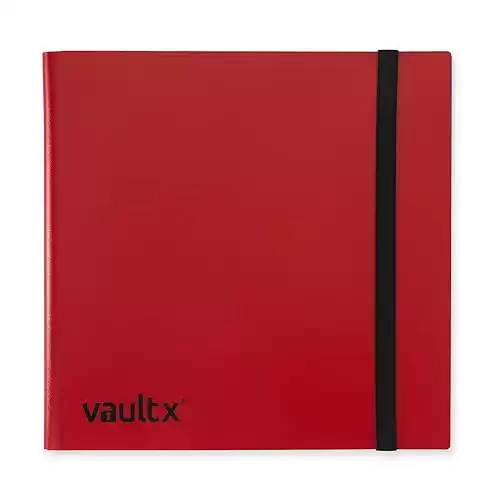Almost everyone is familiar with the Pokemon franchise in some way or another. Some watched the popular TV show, others played one of the many video games, and some collected or played the TCG. Many have done all of the above at some point or another. There are also tons of people interested in playing pokemon but wonder where to start. Well, the answer is, right here.
To summarize the very basic concepts of the game, each player puts basic pokemon onto the field and then can power up their attacks with energy cards and pit them against opposing pokemon. Each time you knock an opposing pokemon out, it’s removed from the game and you draw a “prize card.” When either player has knocked all six opposing pokemon from the game or drawn all six of their prize cards, they win.
Aside from the basic principles, there is still a lot to go over. Today we will cover how to get started, the parts of a turn, using energy, how to evolve Pokémon, attack, and how to win games. Along with everything else you need to know to learn how to play. As well as, some accessories and good packs to start out with as a beginner.
| Pokemon Facts & Stats | |
| Year released | 1996 |
| Number of players | 2 |
| Complexity of rules | Medium |
| Complexity of strategy | Medium |
| Publisher | Wizards of the Coast |
How Does The Pokemon TCG Work?
The Pokemon TCG has always had one major thing going for it, considering the popularity of the franchise as a whole. That is that the card game borrows many elements found within the TV show and games. So, if you’re familiar with Pokemon at all, you may find you already understand many concepts found within the TCG.
The Deck
First, players will have a 60-card deck consisting of pokemon and energy cards to power up their abilities or attacks. They’ll likely contain other things like trainer cards that help further the strategy as well. Aside from energy cards, you can’t have more than 4 copies of a single card.
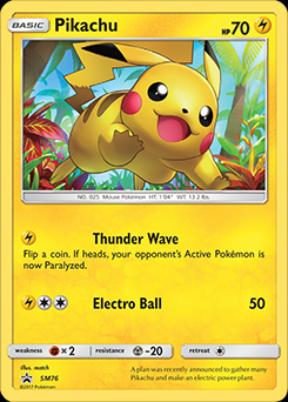
More on what each of these card types does and how they work will be covered below. For now, let us look at a very basic example of gameplay.
General Gameplay
As mentioned above, each player puts basic pokemon onto the field and can power up their attacks with energy cards. Then pit them against opposing pokemon. Each time you knock an opposing pokemon out, it’s removed from the game and you draw a “prize card.” When either player has knocked all opposing pokemon from the game or drawn all six of their prize cards, they win.
If you’re sorta lost at this point, worry not. We’ll break everything down below step by step. How to build your first deck is an entire article in and of itself however. But for now, we’ll operate under the assumption that you have a deck built or bought a starter deck. However, if you don’t we will give you a few options for getting a deck.
- Buying a preconstructed deck
- Borrowing from a friend
- Having a freelancer on Fiverr make you a deck
- Finding a list someone else has built online and replicating it
- Doing research and trying your hand at building a deck
The easiest option from the list is usually to start with a preconstructed deck. So, let’s take a quick look at a few of the best options out there.
The Let's Play Pokemon TCG Box allows you to do just that - Play Pokemon. It contains two ready-to-play decks as well as everything you need to pick up the basics of the game. Furthermore, it features guides for each deck and fan favorite Pokemon such as Charizard.
What's In The Box:
- 2 decks of 60 Pokémon cards, each including 4 foils
- 2 guidebooks to teach you the basics of the game (one for each deck)
- 2 game Coins
- 2 deck boxes
- 2 single-player playmats
- 2 Damage counter sheets
Ice Rider Calyrex League Battle Deck is powerful and highly competitive right out of the box. It features the powerful "Max Lance" ability, which allows you to remove energy cards from Calyrex to deal massive amounts of damage. If you're looking for an easy on ramp to competitive Pokemon, look no farther than this.
What's In The Box:
- 60-card deck filled with power cards
- 3 foil cards including Ice Rider Calyrex V or Shadow Rider Calyrex V
- 3 foil cards including Ice Rider Calyrex VMAX or Shadow Rider Calyrex VMAX
- 1 deck box
- 2 coin condition markers
- 6 damage-counter dice and 1 competition-legal coin-flip die
- 1 Pokémon TCG rulebook
- 1 Quick Guide explaining the decks strategies
- A code card to unlock this deck in The Pokémon TCG Online or Pokémon Trading Card Game Live
The Shadow Rider Calyrex League Battle Deck is highly competitive and powerful right from the box. It features the extremely powerful "underworld door" ability that not only allows you to attach energy directly to your benched Psychic Pokemon but also to draw 2 cards each time you do. If you're looking to get into competitive play, you can't do better than this.
What's In The Box:
- 60-card deck full of powerful cards
- 3 foil cards including Ice Rider Calyrex V or Shadow Rider Calyrex V
- 3 foil cards including Ice Rider Calyrex VMAX or Shadow Rider Calyrex VMAX
- 1 deck box
- 2 coin condition markers
- 6 damage-counter dice and 1 competition-legal coin-flip die
- 1 Pokémon TCG rulebook
- 1 Quick Guide explaining the strategies of the deck
- 1 Code card to unlock this deck in The Pokémon TCG Online or Pokémon Trading Card Game Live
This Charizard-themed battle deck plays around Charizard and his "Battle Sense" ability. It is one of the most straightforward to play right out of the box while still being a ton of fun.
What's In The Box:
- 60-Card Deck
- Card Checklist
- 1 Game Coin
- 1 Playmat
- 1 Deck Box
- Damage Counters
- Online Code Card
Laser Focus is a bit complex while remaining fun for newer players. It requires a bit set-up and foreshadowing and plans to win the game with some powerful psychic Pokemon.
What's In The Box:
- 60-Card Deck
- Card Checklist
- 1 Game Coin
- 1 Playmat
- 1 Deck Box
- Damage Counters
- Online Code Card
Starting A Game
So, you’ve got your deck and are ready to start your first game. First, you’ll flip a coin, play rock paper scissors, or roll a die to determine who goes first. The winning player gets to choose if they’d like to play first or second.
Next, each player will shuffle their deck and draw 7 cards. You’ll need a basic Pokemon card in your opening hand to start the game. If you don’t have one in the opening seven you’ll have to mulligan until you get at least one. More on mulligans later; But for now let’s assume you have at least one.
Start by placing a basic pokemon facedown in the “active pokemon” spot of your playmat. If you don’t have a playmat, just put it near the center of the playing area, slightly on your half of the table. The Pokemon starting facedown adds a nice element of surprise to the start of the game.
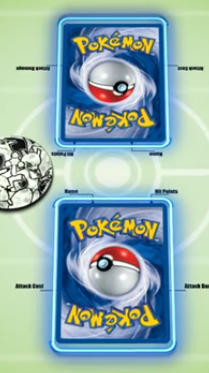
Next, if you have other basic pokemon you may place up to five more onto the “bench” or inactive section just behind where you placed your active pokemon.
Lastly, take six cards from the top of your deck and place them on the left side of your playing area without looking at them. These are your “prize cards” and help keep score throughout the game. At this point, both players flip over their active and benched pokemon.
Now you’re ready to begin your game.
Mulligans
As mentioned above, you need a basic pokemon in your opening hand to begin the game. Look for the word “basic” in the top left corner of your Pokemon cards. If you don’t have a basic Pokemon in the first seven cards you draw, you’ll need to take a mulligan.
To do so, reveal your hand to your opponent then shuffle all seven cards back into your deck, shuffle, and draw seven new cards. Repeat this process until you get at least one basic Pokemon.
Once you do, the other player gets to draw a card for each mulligan that you took beyond the number they took. The same is true for you if your opponent mulligans. In other words, players only get to draw cards equal to the number of mulligans that exceeded the number their opponent took.
For example, if both players take a single mulligan, then neither player would draw a card. But if player 1 takes three mulligans and player 2 takes one, player two would draw two cards.
How To Play
Now that we’ve gotten some of the more general information about the game and the set-up out of the way let’s get into how to actually play. In this section, we will cover things like the parts of a turn, how to attack and deal damage, how to evolve your Pokemon, and use things like trainer cards. So, let’s start learning.
The Parts Of A Turn
Each turn has three major parts. They are:
- Draw
- Actions
- Attack
You’ll start each of your turns by drawing a card. This happens in the “draw ” step of the turn. Next, you move to the “actions” part of the turn where you can do quite a bit of things. The majority of the things you can do are:
- Play a basic Pokemon
- Evolve a Pokemon
- Attach an energy card to a Pokemon
- Play a trainer card
- Retreat your active pokemon
- Use your Pokemon’s abilities
Any of these things can be done in any order you wish. Once you’ve done as many of these actions as you wish, you move to attacks. Here you can choose to attack with your active Pokemon if you wish to do so and if you don’t, you simply end your turn.
Taking The First Turn
The player who goes first will start by drawing a card. Then they have the option to take many of the actions mentioned above. So, going first gives you the advantage of being able to do quite a bit of actions before your opponent does.
With that said, to mitigate some of that advantage there are a few things you can’t do on the very first turn. Things like using a “supporter” card or attacking with your active pokemon can not be done on the first turn of the game. As a result, depending on your deck’s strategy, it can be more beneficial to go second. However, this usually isn’t the case.
Active And Benched Pokemon
Players will build up their team of Pokemon by placing them on the field in one of two spots; The active spot or on the bench. Active Pokemon are used to attack opposing active Pokemon. Pokemon who are being attacked are known as “defending” Pokemon. Each player may have only one active Pokemon at a time.
The “bench” is where you place additional basic Pokemon to build your team. You may have a total of five benched Pokemon at a time. During the actions step of your turn, you may place any number of basic Pokemon from your hand onto the bench, as long as there is room for them. Remember, you can only have five benched Pokemon at a time.

Anytime your active Pokemon is knocked out or you retreat it, you must choose one of the Pokemon on your bench to replace it. Additionally, Pokemon on the bench can be evolved or powered up with energy cards to use their abilities while on the bench. So, building a strong team of active and benched Pokemon is key to victory.
Evolving Your Pokemon
Evolving Pokemon lets you give your basic pokemon stronger attacks and better HP. Each Pokemon will say “basic”, “stage 1”, “stage 2” or “V” in the top left corner of the card. A basic Pokemon evolves into a “Stage 1” Pokemon. Then, that Stage 1 Pokemon can evolve into a stage 2 Pokemon. While V Pokemon evolve into a VMAX.
Also located in the top left of the card you’ll find what Pokemon your Stage 1 & 2 Pokemon evolve from. For example, a stage 1 Charmeleon evolves from a basic Charmander and Charmeleon evolves into Charizard, which is a level 2.
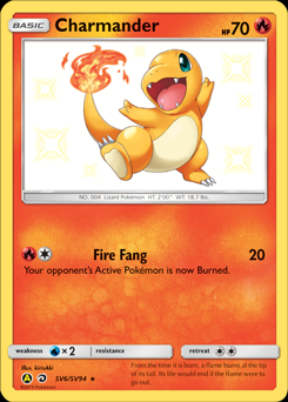
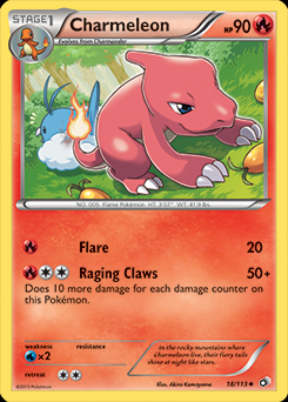
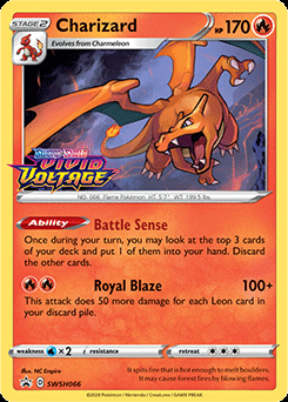
So with a basic Charmander in play, you could evolve it into Charmeleon by placing the Charmelon from your hand on top of the basic Charmander. There are however a few restrictions on evolving your Pokemon. For example, you can’t evolve a Pokemon the same turn you put it into play. This includes any stage 1 or 2 Pokemon that have entered that turn.
To elaborate, if you evolved Charmander into Charmeleon, you couldn’t evolve it into Charizard that same turn. Furthermore, you can’t evolve Pokemon on the first turn of the game. You can, however, evolve any number of different Pokemon as long as they’ve been on the field for at least a turn. An evolved Pokemon keeps everything attached to it, including damage counters.
However, any special effects or status’s that are on the Pokemon, such as, “poison” or “asleep” end when the Pokemon evolves. An evolved Pokemon can not use any of the attacks or abilities of the previous version in its evolution chain once it is evolved.
Using Energy Cards
Energy cards are an intrinsic part of the Pokemon Trading Card game. They are used to power up your Pokemon’s attack so they can defeat opposing Pokemon. Energy cards are attached to your Pokemon by placing them underneath the Pokemon where they are still visible. Players can only attach one energy card per turn and energy cards are discarded when a Pokemon retreats.
Once a Pokemon has energy cards attached to it, they stay there until an effect or action removes them. To power up your Pokemon’s attacks, you must match the energy requirements in their attack cost. For example, this Charizard requires two fire energy to use its Royal Blaze.

Other Pokemon have different attack costs and some even require multiple types of energy. There are also colorless energy symbols that you can use any type of energy card to meet. Think of these as “wildcards” that you can use any energy type for. The attack cost seen below for Charmander’s fire fang has a colorless symbol on the right. This means you’d need one fire energy and another energy of any type to power up the attack.

Energy comes in a variety of types. Including:
- Grass
- Fire
- Water
- Lightning
- Psychic
- Fighting
- Darkness
- Metal
- Fairy
How To Attack
A lot of battles come down to each player’s attacks and strategies. First off, remember that attacking ends your turn. So be sure to do all other actions you wish to do in your turn before attacking. This includes things that boost your attacks or help protect your Pokemon.
Once you’re sure that you are ready to attack, you choose the attack on your active Pokemon you’d like to use. Then make sure you have the correct number and type of energy attached to meet the attack cost. If you do, tell your opponent which attack you’ll be using, and once attacked the defending Pokemon receives a number of damage counters equal to the amount of damage it took.
Related: Best Pokemon Packs To Packs And Boxes To Buy
There are some variables that affect the amount of damage your attacks do. So be sure to check out the weakness and resistances of the attacking and defending Pokemon. As well as all abilities and other texts on the card. Lastly, you’ll take into consideration any trainer cards that have been used as well.
There will be more on how to deal damage as well as weakness and resistances and trainer cards below. You’re now well on your way to knowing how to play Pokemon.
Dealing Damage
The primary point of attacking is usually to deal damage to opposing Pokemon, with the intention of knocking them out of the game. The amount of damage done by an attack can be seen to the right of each attack name. For example, the Muk pictured below does 120 damage for its sludge whirlpool attack.
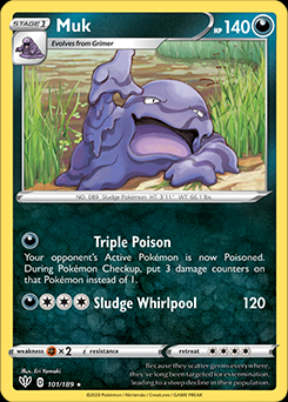
If a Pokemon is damaged, the amount of damage received is marked on the Pokemon with damage counters. These counters are used to keep track of the amount of damage an active Pokemon has received.
Furthermore, there are certain abilities that allow you to place damage counters directly into an opposing Pokemon. Counters placed directly on a Pokemon aren’t reduced by things such as the defending Pokemon’s resistance. Each damage counter placed onto a Pokemon without attacking counts as 10 damage.
Damage counters are not removed from a Pokemon if it evolves or moves to the bench from active. Damage counters are only removed when a Pokemon is healed, knocked out of the game, or is removed from the game by any other means.
How much damage a Pokemon can receive before being knocked out of the game is determined by its Hit Points. This number can be found in the top right-hand corner of each Pokemon.
When a Pokemon receives damage equal to or greater than its hit points it’s knocked out of the game. When this happens, the Pokemon and everything attached to it are moved to the discard pile.
Weakness And Resistances
Most Pokemon will have a weakness or a resistance to other types of Pokemon. These stats can be found near the bottom of the card. These numbers will change the total amount of damage that a Pokemon has after an attack. For instance, fire-type Pokemon may be weak to water-type Pokemon or attacks. While a water-type Pokemon may be weak to lightning and or grass.
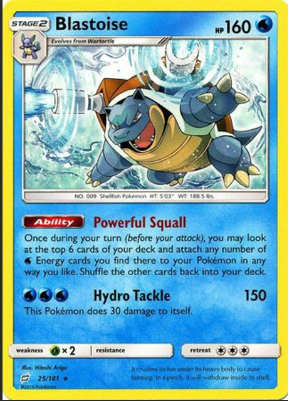
Weaknesses work like a multiplier for damage. So, for example, let’s look at the “x2 Grass weakness” on the Blastoise above. If it were to receive 30 damage from a Grass-type Pokemon, the damage would be doubled to 60 because of its weakness to Grass.
Resistances usually have a set value and work just the opposite as weaknesses do. They cause the given Pokemon to take less damage from a given type of Pokemon instead of more. As an example, say a Fire-type Pokemon attacked the Blastoise below for 60 damage.
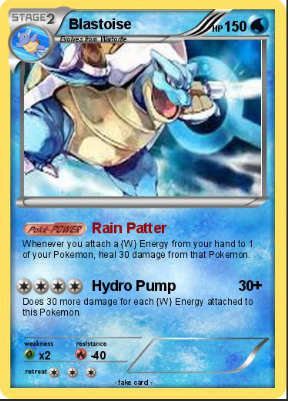
Since it has a resistance of -40 to Fire types, it would only take 20 damage. Once you understand the concept it just takes a bit of simple math. However, there are a few other things worth noting.
First, always add or subtract weaknesses and resistances after base attack damage. So, for example, “I damage your Charizard for 40. Then, its x2 weakness to water makes it 80.” As opposed to, “I damage your Charizard for 80.” This helps all players remain clear on how much damage Pokemon receive.
Next, benched Pokemon do not take their weaknesses and resistances into account. Finally, there are some card mechanics that eliminate weakness and resistance altogether. As well as Pokemon with multiple weaknesses and some with none at all. Just be sure not to forget to take them into consideration.
Using Trainer Cards
Trainer cards are non-Pokemon cards that give you some powerful effects to enhance your strategy. There are three different categories of trainer cards and each one works a bit differently. There are item, supporter, and stadium trainer cards and each has its advantages.
Item Cards
Item trainer cards are the most basic and can be played during the “actions” portion of your turn. You can play any number of item cards during your turn. When you play an item card, simply follow the instructions on the card and then put it into your discard pile afterward.
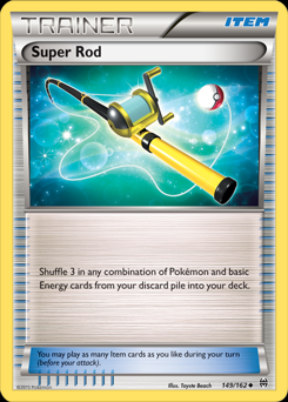
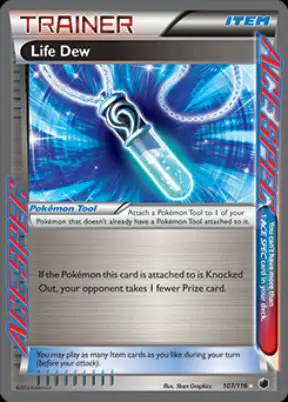
There are also Pokemon “tool” cards, which are item cards. However, unlike regular item cards, you attach them to a Pokemon you control and they give the Pokemon the effect stated on the card. Each Pokemon can only have one tool card attached to it at a time. When that Pokemon is knocked out of the game, it and all tool cards attached to it go to the discard pile.
Supporter Cards
Next, we have supporter cards. They typically have more powerful effects than item cards. As a result, you can only play one supporter card per turn. Furthermore, supporter cards can’t be played on the very first turn of a game. Once they are played, their effect takes place and they go to the discard pile.
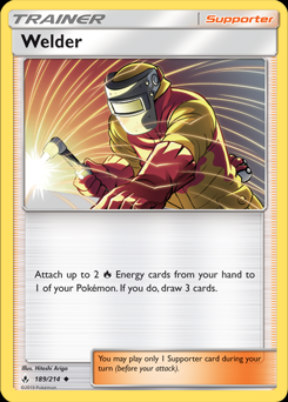
Stadium Cards
Lastly, there are stadium cards. Stadium cards stay on the field after you play them and affect both players. There can only be one stadium card on the field at a time. On your turn, you may play one stadium card, as long as it doesn’t have the same name as the stadium card already on the field.
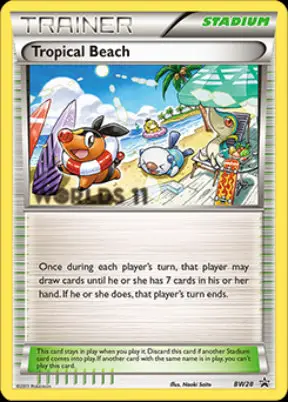
Whenever a new stadium card comes into play, the last one is moved to the discard pile and its effects are ended.
Winning The Game
Now that you know how to play, let’s look at how you win games. Usually, this is done by knocking out your opponent’s Pokemon and then gaining price cards. However, there are a few other ways that players can win games too. So, let us go over all the possible ways you can snag your first victory.
As mentioned above, at the start of each game, each player sets aside six cards as prize cards. Whenever you knock out one of your opponent’s Pokemon you get to move one of your prize cards to your hand. With that said, be sure to check the effects of all Pokemon involved in the knockout, as some have text that will change the number of prize cards you get for a knockout.
If a player takes all their prize cards they win the game. This is how most games will end but there are a few others ways to win as well.
For example, if you knock out all your opponent’s Pokémon and they have none left on their bench, you win the game. This is a bit easier said than done, and you’ll usually draw all of your prize cards before this happens.
Lastly, at the beginning of each turn, if either player doesn’t have any cards in their library, that player loses the game. So, if you go to draw a card and don’t have any left, that means you’ll lose the game. The same is true for your opponent, so be sure to keep each player’s deck sizes in mind.
Accessories And Gameplay Items
Let’s take a look at a few things you may need to make your Pokemon experience better. This includes things for easy card storage, keeping your cards safe, and making gameplay simpler.
A few items every player will likely need – A deck box, card sleeves, a playmat, damage counters or dice, coins, and possibly a small card portfolio or binder. With that said, there are tons of each of these products on the market. So, finding the best option as a beginner can be a little daunting.
Below you’ll find our top picks for each item to take some of the shopping hassles away.
Ultra Pro is one of the most trusted names in the world of TCGs for a good reason. They offer high-quality products all the way across the board and their playmats are no different.
Features:
- Officially licensed for Pokémon Trading Card Game
- Features iconic Pokemon character art
- Approximately 24 in. x 13.5 in. and lays flat
- A soft fabric top helps protect cards during gameplay
- Non-slip rubber backing keeps the playmat from shifting during use
Again, Ultra Pro is the go-to brand for card sleeves to protect your Pokemon cards. They are durable, highly protective, and give your cards a great shuffle feel.
Features:
- 100 Ultra Pro Eclipse standard sleeves (66X91 MM)
- Completely opaque frosted backs
- Non-glare matte face
- smooth shuffe
Ultimate Guard is known for its durable, easy-to-use products and their deck boxes are no different. If you have 60 card decks that you need to be sure are kelt safe, look no farther than the Ultimate Guard Sidewinder.
Features:
- Holds up to 80 double-sleeved Pokemon Cards
- Innovative XenoSkin material has premium microfiber inner lining
- 3-fold lid leaves the box open to both sides for easy extraction of the deck
- 4 magnets for a precise and robust closure
Keeping track of the damage as well as any special effects on your Pokemon is very important. This dice set will ensure that everything remains clearly marked for all players and will help your games run smoothly.
Features:
- 5 Deluxe spindown damage counters (10-120)
- 4 Special condition markers (Poison, Asleep, Paralysed, Confused)
- 4 Heads & tails dice
Small Portfolios are great for beginner players to store extra cards they may not be using. As well as, making perfect trade binders in the future. This may not be the top priority for new players but even the smallest collections benefit from being organized. With that said, the Vault X 4 pocket portfolio is a great place to start.
Features:
- 20 4-pocket pages can hold160 cards
- A padded layer built into each page protects your cards
- Side loading pockets designed to keep your cards securely in place
Conclusion
Well, you now know how to play Pokemon and where to find everything you’ll need to do so. So, the only thing left to do is get out there and play some games. Regardless of if you’re a long-time fan of the video games or TV or if you’re completely new to the franchise, I’m sure you’ll find lots to like about the Pokemon TCG.
